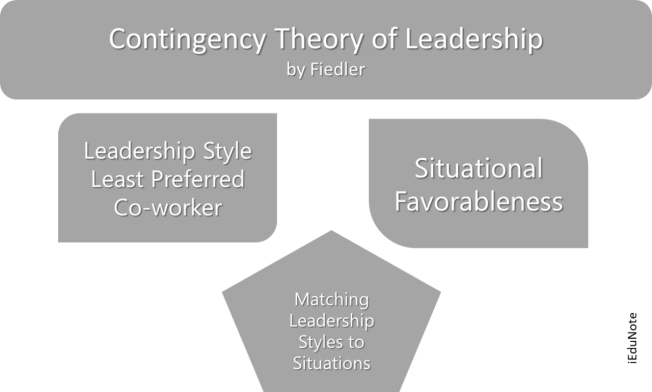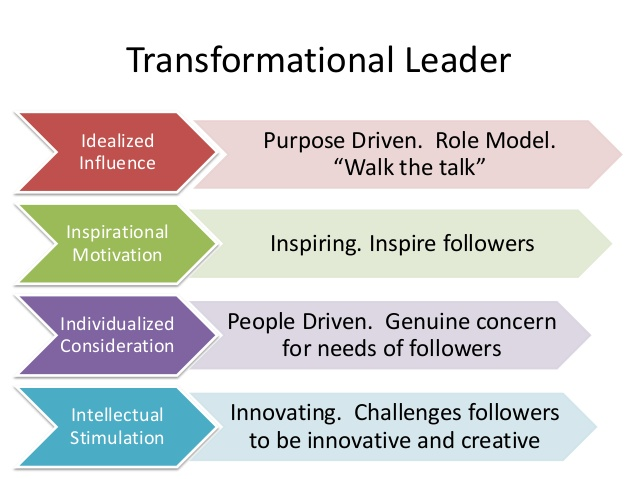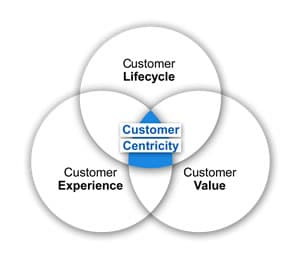LCBS5003 – Leadership & Culture in Organisational Contexts Assignment Sample 2023
Introduction
Leadership is a very essential part of the organisation at the time of motivating the people who are working so that they can achieve the common goal. In which it will discuss ‘Leading complete change can happen effectively only if full understanding and gratitude of organisational culture are progressively developed’. Further, it will give information about notion and nature of leadership and organizational culture. Along with this, it will also analyse values, beliefs and moral scopes of leading organizations through cultural change in varying backgrounds and situations.
It will also include different types of theory that are related to the leadership and culture that is on the basis of the organisation context. The report will also give information about the leadership theories and organizational tools and techniques in relation to topic. At the last of the report, it will also introduce, explain the ranges of the practical examples that are related to the topic.
Question
‘Leading through change can happen effectively only if a full understanding and appreciation of organizational culture is progressively developed’
It has been identified that in today’s world leadership is very important as it helps company at the time of finding the most appropriate and effective management activity (Christian Daniel, 2021). It also allows the company to adapt to the things that are related to the changing environments. Leaders keep their full focus at the time of gathering the knowledge of the organizational culture so that they can easily grab the opportunity for managing the organization effectively.
If all the things that are related to the culture are known in the proper manner then it can easily implement and discover the organizational change. For the people, it is very hard to for distinguishing the relationship between the leadership and the organisation culture as both lead towards successful implementation or achieving the competitive change.
To know more regarding the question few things are explained in the proper manner that is given below (Coetzer et. al. 2017).
Define, explore and critically analyse the notion and nature of leadership and organizational culture
Notion and nature of leadership: It is the ability of the people that is used at the time of influencing and motivating or guiding followers of the organization. Leadership notion is known as the process that includes the things regarding the social influence that can easily show the efforts of the people at the time of achieving the goals (Wan et. al. 2018).
The nature of the leadership is to give and provide the direction, vision and clarity representation, helping the people at the time of reducing the uncertainty and having stakeholder’s attention along with supportive behaviour. Types of the leadership concepts are:
Honesty and integrity: To become an effective leader it is very important for the individual to have honesty and integrity towards its organization and team members.
The leader must also have the ability to resolve the conflict on a faster basis so that it does not affect the work. For this, they must also have strong resolution skills which are very important at the time of achieving the leadership role (Taştan and Davoudi, 2017).
Managing the team is the most important task that is performed by the leader on the basis of two-way communication that is at the time of directing and delegating the responsibility. It also results in providing value for the member of the team.
Organizational culture: It is properly known as the culture that is related to the way of behaving within the organisation. On the other hand, it is also the collection of the practices, values and expectations that can be used at the time of guiding and informing the actions that are performed by team members. Culture is also of four types that are hierarchy culture that is based upon structured control culture and the process-oriented culture (Trezona et. al. 2018).
Another one is a market culture that includes competitive and result-oriented culture; clan culture that has friendly collaborative culture and last adhocracy culture that is dynamic and entrepreneurial create culture. The characteristics of the organizational culture is team orientation, attention to detail, innovation, risk-taking, people orientation, stability and outcome orientation.
Explaining the Values, beliefs and ethical dimensions of leading an organization through cultural change
The organization is only successful because of that culture based upon the strength and shared set of beliefs that are linked to the strategy and structure. It has been identified that when the organization has a strong culture then it had to face three things that are related to
- Employees of the organization can easily respond to any of the situations
- The employers believe that their response must be in the proper manner (Clarke and O’Donoghue, 2017)
- Employees also know that they will be rewarded for achieving organizational values.
In the organization, it has been identified that employees place an important role at the time of having a strong culture, images of selecting candidates and sharing the organization believes. Organizational culture is an essential part of the organization that defines the proper way of behaving within the organization. Culture is also known as one of the nebulous concepts.
For the employees, it is very important that they must have full information regarding what is the culture performed within the organization by understanding all its goals and objectives.
The values believe in ethical dimensions of leading organisations through control change in variance situation and context are outcome orientation which is mainly based upon emphasizing result an achievement (Cansoy, 2019). People orientation is mainly based upon insisting on respect, fairness and tolerance for the individual who is working in the organization so that they do not face any difficulty at the time of cultural change.
Team orientation is mainly relied upon rewarding and emphasizing collaboration which is very important for the workplace. Instability is the other thing that is related to the value and beliefs at the time of having changes in the organization which is mainly relied upon providing security and a predictable course.
The change in the organization will lead towards the innovation of experimentation and risk-taking as it is very new for the employees who are working in the organization as it includes different types of goals and objectives. It will also change the hierarchy of the organization through which they were working for a longer period of time.
It can also result in a degree of urgency which helped them at the time of defining how quickly the organization want to change management so that they can easily drive decision-making and innovation (Ayman and Lauritsen, 2018). In the organisation, culture plays an important role at the time of defining how the organisation is and other things.
Analyse and contextualise a range of relevant theories and organizational tool
Leadership theories
There are different types of leadership theories that are used by the leader at the time of staying at the top of their game which are:
Contingency theory
In this theory, the author has said that there is no way or the style of leadership that can be easily fitted to all the situations that are faced within the organization. It is mainly used by the organization at the time of influencing and type of situation. With the help of this theory, the leader can choose the right solution for the things they have to take into account for the variables (Leithwood et. al. 2020).
It also helped at the time of identifying the leader effectiveness whether it is contingent or the leadership style that is used by the leader will suit a particular situation or not. On the basis of the theory, it has been identified that the individual can be effective for only one circumstance but on the other hand ineffective leader can be in any other circumstances.
It also emphasizes the things which are related to the importance of a leader’s personality and the situation in which the leader was appointed.

Figure 1 contigency theory
Source: (Iedunote, 2021)
As for the view of Fiedler’s contingency theory of leadership, it has been identified that people do not become leaders on the basis of their qualities but they become on the basis of various situational factors (Khan and Khan, 2019). The theory of contingency leadership tells about three elements that are affected by the relationship between leadership style and situational favourableness that are discussed below:
- The leader and member relationship
- The degree of task structure and
- The leader’s position power
If all dimensions that are given above add high then it will result in making the situation favourable on the other hand if they’re low then it will determine the effectiveness of combination with leadership style.
Trait theory of leadership
It is the theory that says that individuals have certain inborn qualities and characteristics that made them good leaders. The qualities can be based upon the different types of factors that are related to intelligence factors, personality factors and physical characteristics. With the help of the theory, the leaders can easily understand the study of human personality by measuring their habit patterns of thought, behaviour and emotion (Karatepe et. al. 2019).
The trait theory of leadership was given by Thomas Carlyle That was started in the 20th century. It was mainly developed from the great man theory which was very popularized in the 80s. The trait leadership theory is mainly classified into 5 traits that are related to neuroticism, agreeableness, conscientiousness and openness
Transformational Leadership theory
It is theory of leadership in which the leader of the organization worked with the team without having any immediate self-interest at the time of creating a vision to guide the change on the basis of inspiration and executing the change (Jäppinen, 2017). The theory is also known as relationship theories that have it full focus on building a good relationship between followers and leaders.
The theory also tells that there are different types of leaders present in the world who are charismatic, engaging, motivated, inspiration towards their followers at the time of transforming and becoming better towards the task.

Figure 2 transformational leadership theory
(Source: Wikispaces, 2021)
With the help of this theory, the leader can motivate their employees to show their ability at the time of performing the task which will also result in improving their performance. Under this, the leaders are not only focused on their performance or team performance but them also Push team members to reach their potential.
It is also based upon four elements that are related to inspirational motivation, idealised influence, individual consideration and intellectual stimulation all this including form transformation leadership.
The story was introduced by James burns in its book leadership in the year 1978 (Haar et. al. 2019). In which he has defined that leadership is known as the process in which the leader along with their colleagues try to reach and higher levels of motivation and ethics. The story is very difficult at the time of training and teaching because it includes different types of combination which is related to many leadership theories.
Indeed sometimes followers can also be manipulated by their leaders and can lose the chances as compared to getting more. It also includes different types of impression management which can result in moral self-promotion by leaders.
Organizational tools and techniques
It has been identified that the organization can use different types of tools and techniques for their leadership and culture.
- Tools
- Trello
It is a type of tool that can be used by the organization as it helps the leader at the time of collecting different types of information that is within our list format. It is a board that is a list of the list that is filled with cards that can be easily used by the members of the team along with their leader (Gerard et. al. 2017).
With the help of this, the organization can easily perform all the things that are done after having changes in the workplace whether it is related to the leader or another thing. It also helps the organization at the time of organizing the project that is from any of the sizes and it also includes the book that is used at the time of managing a client’s financial statement.
- Calendar and reminders
It is the other tool that can be used by the organization for their leadership and culture in this they can right important events that are coming in the future along with the deadline of the task (Erthal and Marques, 2018). With this, they can also put the date of their meetings so that nobody forgets. Along with this, the reminder will help the organization at the time of reminding the employees that they have this much time to complete the task or other things which is very important.
It has been identified that the business cannot survive without using this type of tool which is known as calendar and reminders. With the help of the calendar, they can easily take a quick glance to see day-offs and the date of the week falls and will not annoy any type of noisy reminder about the appointments and other things.
- Notebook and legal pad
It is very important for organisation leader to keep a notebook so that they can easily write the notes for the important things (De Nobile, 2018). Along with this, they can also write me along with this they can also write the things which are related to giving instruction to the employees or assigning the task.
With the help of this, the leader can easily memorize all the things which are a direct link to a better comprehension of the task that a present within our team. It can be also done by downloading a memory app which is the version of 1.0 in which the leader can easily write all the things regarding information of the employee’s task and other things which is very essential.

- Techniques
- choosing the right leader
It has been identified that implementing a change within the organization is a great challenge for the business for this they have to pick the right leader (Crawford et. al. 2020). It is the responsibility of the organization to find a leader who can easily align all the things which are related to the change.
The leaders must have all their skills which are related to awareness about a business, cost, economic, social and welfare benefits which are involved at the time of her doing change process. He must also know how to give all the information related to the change to their employees so that they can feel comfortable at the time of the change implementation process.
- Establish a strong change team
For the organization, employees are known as one of the essential parts at the time of having a change team. While performing the change process it is the duty of the organization to involve them so that they can make themselves encouraged to look at the business as if they’re running on their own.
They must choose employees from different departments that are marketing manager, accounting clerk, subordinated staff at the time of involvement in the change process (Coetzer et. al. 2017). With the help of this, the organization can make a strong change team which will help them to keep the organization up. On the other hand, they can also form a powerful team that is full of leaders who can easily help at the time of steering and designing change that is respective to the division of work.
Practical examples
- It has been identified that good leaders know that don’t have information about all the things in the proper manner on the other hand they can also learn something from their junior employees (Arar al. 2017). For example, if the leader is exporting assigning different tasks along with responsibility for the employees then they also need someone from the team who can advise them on the different issues that can be coming up in the future regarding assigning of tasks.
- Mainly leaders in the organization give direction to their employees but on the other hand, they must also involve themselves in the actual work. For example, if leader is part of team who are accompanying the marketing team on the field visiting so that they can expand their company product then it is the duty of the leader to pitch client in the same manner which the team members are doing.
It will not only result in motivating employees but can also boost the overall morale of the team. With the help of this, the leader can also develop new skills and can also build up good relationships and trust with the employees.
- For change management, the leadership can also include different types of few things which are very different as compared to the previous management. For example, sometimes change happened because of organizational turnover, is a small change in product and services or a staffing replacement all having change in human resource policy (Al-Kurdi al. 2020).
The organization also has to give information to the people who are working in the workplace about the reason behind happening of this change and what is the goal and objectives.

Conclusion
By summing up the above report it has been concluded that the report has given the full information related to leadership and culture in the organization context. In the assignment, it is also discussed about notion and nature of leadership and organization culture along with values beliefs and ethical dimensions which are used at the time of leading organization on the basis of cultural change.
It has also discussed different types of leadership theories that are transformation leadership, trait leadership and contingency theory. With all this, it has also given the information related to organization tools and techniques in relation to change. Along with this, it is also explained about different dangers of the leadership and organization culture with example.
References
Al-Kurdi, O.F., El-Haddadeh, R. and Eldabi, T., (2020). The role of organisational climate in managing knowledge sharing among academics in higher education. International Journal of Information Management, 50, pp.217-227.
Arar, K., Beycioglu, K. and Oplatka, I., (2017). A cross-cultural analysis of educational leadership for social justice in Israel and Turkey: Meanings, actions and contexts. Compare: A Journal of Comparative and International Education, 47(2), pp.192-206.
Ayman, R. and Lauritsen, M., (2018). Contingencies, context, situation, and leadership.
Cansoy, R., (2019). The Relationship between School Principals’ Leadership Behaviours and Teachers’ Job Satisfaction: A Systematic Review. International Education Studies, 12(1), pp.37-52.
Christian Daniel, (2021). LEADING THROUGH CHANGE CAN HAPPEN EFFECTIVELY ONLY IF A FULL UNDERSTANDING AND APPRECIATION OF ORGANIZATIONAL CULTURE IS PROGRESSIVELY DEVELOPED. [Online]. Available through: < https://revistainclusiones.org/index.php/inclu/article/view/2548 >
Clarke, S. and O’Donoghue, T., (2017). Educational leadership and context: A rendering of an inseparable relationship. British Journal of Educational Studies, 65(2), pp.167-182.
Coetzer, M.F., Bussin, M. and Geldenhuys, M., (2017). The functions of a servant leader. Administrative Sciences, 7(1), p.5.
Crawford, J.A., Dawkins, S., Martin, A. and Lewis, G., (2020). Putting the leader back into authentic leadership: Reconceptualising and rethinking leaders. Australian Journal of Management, 45(1), pp.114-133.
De Nobile, J., (2018). Towards a theoretical model of middle leadership in schools. School Leadership & Management, 38(4), pp.395-416.
Erthal, A. and Marques, L., (2018). National culture and organisational culture in lean organisations: a systematic review. Production Planning & Control, 29(8), pp.668-687.
Gerard, L., McMillan, J. and D’Annunzio-Green, N., (2017). Conceptualising sustainable leadership. Industrial and Commercial Training.
Haar, J., Roche, M. and Brougham, D., (2019). Indigenous insights into ethical leadership: A study of Māori leaders. Journal of Business Ethics, 160(3), pp.621-640.
Iedunote, (2021). Contingency Theory of Leadership by Fiedler. [Online]. Available through: < https://www.iedunote.com/contingency-theory>
Jäppinen, A.K., (2017). Analysis of leadership dynamics in educational settings during times of external and internal change. Educational Research, 59(4), pp.460-477.
Karatepe, O.M., Ozturk, A. and Kim, T.T., (2019). Servant leadership, organisational trust, and bank employee outcomes. The Service Industries Journal, 39(2), pp.86-108.
Khan, N.A. and Khan, A.N., (2019). What followers are saying about transformational leaders fostering employee innovation via organisational learning, knowledge sharing and social media use in public organisations?. Government Information Quarterly, 36(4), p.101391.
Leithwood, K., Harris, A. and Hopkins, D., (2020). Seven strong claims about successful school leadership revisited. School leadership & management, 40(1), pp.5-22.
Lim, A.J.P., Loo, J.T.K. and Lee, P.H., (2017). The impact of leadership on turnover intention: The mediating role of organizational commitment and job satisfaction. Journal of Applied Structural Equation Modeling, 1(1), pp.27-41.
Litz, D. and Scott, S., (2017). Transformational leadership in the educational system of the United Arab Emirates. Educational Management Administration & Leadership, 45(4), pp.566-587.
Rosenbaum, D., More, E. and Steane, P., (2018). Planned organisational change management: Forward to the past? An exploratory literature review. Journal of Organizational Change Management.
Spurgeon, P., Clark, J., Ham, C. and Keogh, B., (2017). Medical Leadership: From the Dark Side to Centre Stage: From the Dark Side to Centre Stage. CRC Press.
Taştan, S.B. and Davoudi, S.M.M., (2017). The relationship between organisational climate and organisational innovativeness: testing the moderating effect of individual values of power and achievement. International Journal of Business Innovation and Research, 12(4), pp.465-483.
Trezona, A., Dodson, S. and Osborne, R.H., (2018). Development of the Organisational Health Literacy Responsiveness (Org-HLR) self-assessment tool and process. BMC health services research, 18(1), pp.1-10.
Wan, S.W.Y., Law, E.H.F. and Chan, K.K., (2018). Teachers’ perception of distributed leadership in Hong Kong primary schools. School Leadership & Management, 38(1), pp.102-141.
Wikispaces, (2021). TRANSFORMATIONAL Theory Page. [Online]. Available through: < https://wikispaces.psu.edu/display/P5PFLD/TRANSFORMATIONAL+Theory+Page>
Know more about UniqueSubmission’s other writing services:

